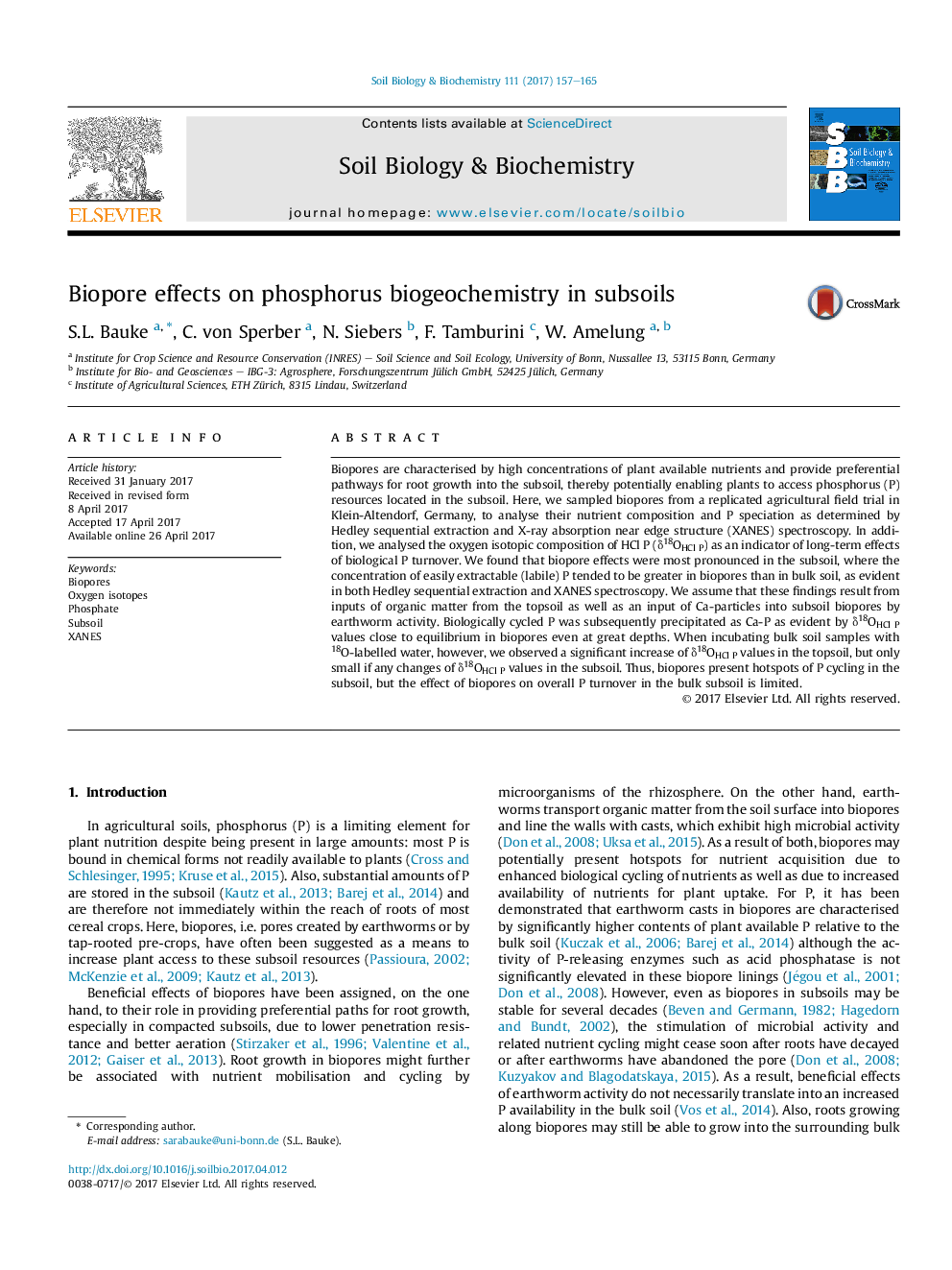| Article ID | Journal | Published Year | Pages | File Type |
|---|---|---|---|---|
| 5516296 | Soil Biology and Biochemistry | 2017 | 9 Pages |
â¢XANES spectroscopy indicated increased proportion of Ca-P in subsoil biopores.â¢Î´18OHCl P of Ca-P in subsoil biopores tended to be greater than in bulk soil.â¢Î´18OHCl P indicated that biologically cycled P in topsoil is precipitated into Ca-P.
Biopores are characterised by high concentrations of plant available nutrients and provide preferential pathways for root growth into the subsoil, thereby potentially enabling plants to access phosphorus (P) resources located in the subsoil. Here, we sampled biopores from a replicated agricultural field trial in Klein-Altendorf, Germany, to analyse their nutrient composition and P speciation as determined by Hedley sequential extraction and X-ray absorption near edge structure (XANES) spectroscopy. In addition, we analysed the oxygen isotopic composition of HCl P (δ18OHClP) as an indicator of long-term effects of biological P turnover. We found that biopore effects were most pronounced in the subsoil, where the concentration of easily extractable (labile) P tended to be greater in biopores than in bulk soil, as evident in both Hedley sequential extraction and XANES spectroscopy. We assume that these findings result from inputs of organic matter from the topsoil as well as an input of Ca-particles into subsoil biopores by earthworm activity. Biologically cycled P was subsequently precipitated as Ca-P as evident by δ18OHClP values close to equilibrium in biopores even at great depths. When incubating bulk soil samples with 18O-labelled water, however, we observed a significant increase of δ18OHClP values in the topsoil, but only small if any changes of δ18OHClP values in the subsoil. Thus, biopores present hotspots of P cycling in the subsoil, but the effect of biopores on overall P turnover in the bulk subsoil is limited.
